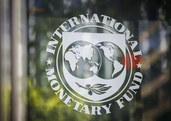The National Bank of Romania is expecting annual inflation rate in Romania to stand at 9.6% at the end of 2025, 3.7% in December 2026 and 2.9% in Q3 2027, according to the BNR Quarterly Inflation Report, November 2025 edition.
Domestically, in the current baseline scenario, the annual CPI inflation rate is projected on a downward path almost throughout the forecast interval, after the steep increases in 2025 Q3 coming from the electricity market liberalisation in July and the broad-based hikes in indirect taxes in August. As a result of these shocks, inflation rate climbed to 9.88 percent in September, reaching a peak of the period under review before decreasing slowly to 9.6 percent in December.
High inflation levels are seen persisting until mid-2026 and, once the recent shocks drop out of the calculation, the annual rate will decline significantly, i.e. by approximately 5 percentage points in 2026 Q3. Subsequently, disinflation will be underpinned by the wider demand deficit and the progressive moderation of inflation expectations.
The annual CPI inflation rate is therefore projected at 3.7 percent at end-2026, returning inside the variation band of the target in 2027 Q1 and falling to about2.9 percent in 2027 Q3.
Compared with the projection in the August 2025 Inflation Report, the new path shifted higher all through the forecast interval: by 0.8 percentage points at the end of this year, 0.7 percentage points in December 2026 and 0.3 percentage points in 2027 Q2, the forecast horizon of the previous Report. This revision mainly reflects an upward reassessment of core inflation and an underestimation of the effect of the electricity market liberalisation, only partially offset by a lower-than-expected pass-through of the VAT hike on volatile food and fuel prices.
The balance of risks to the inflation projection remains tilted to the upside, even though the inflation rate in the baseline scenario has already been reassessed upwards. Given the persistence of elevated uncertainty both domestically and globally, further pressures may affect prices in the period ahead, especially via fiscal, energy- and weather-related channels. At the same time, the lasting effects of already implemented and anticipated - fiscal consolidation and price liberalisation measures are still difficult to quantify.
Domestically, the most important risks to developments in inflation stem from administrative and fiscal decisions, in a context marked by inflation persistence. Specifically, the expiry of the natural gas price capping scheme scheduled for April 2026 is viewed as a watershed: full market liberalisation could push these prices sharply higher.
The magnitude of possible increases will depend on a number of factors, in particular on the conditions prevailing in global energy markets at the time. In an environment of increasingly large price fluctuations, a rise in volatility on the energy market cannot be ruled out. This could trigger spillover effects on the functioning of the domestic market and, hence, on price stability.
































Comentează